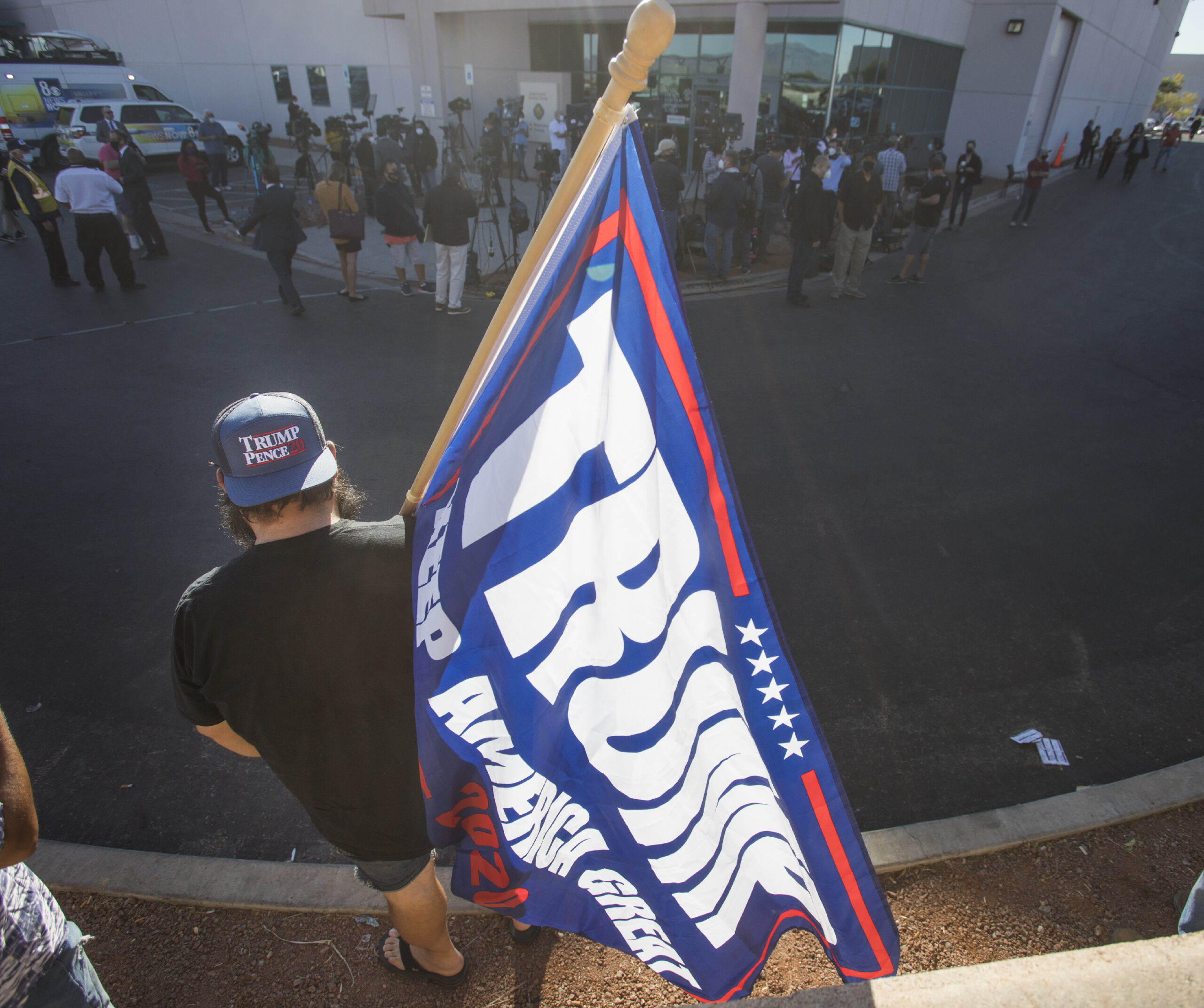UPDATE: More Dems going R than Rs going Dem, but many more indies switching to Dem than R

UPDATED, 10/4/22, 9:15 AM
There are still more Dems becoming Rs than the other way around, and many more Dems leaving the party to become indies than there are Rs. But many more indies are becoming Dems than they are becoming Rs, so the trends are mixed. The Dems have been extending their lead over the GOP in Clark over the last six weeks, but two out of the three trends here still favor the Rs.
The latest (last three months in parentheses):
Democrat to Republican: 573 (1,573)
Republican to Democrat: 387 (963)
Democrat to nonpartisan: 1,391 (3,545)
Republican to nonpartisan: 729 (2,078)
NP to Democrat: 1,822 (4,639)
NP to GOP: 1,228 (3,298)
UPDATED, 9/1/22, 9:45 AM
The latest (last three months in parentheses):
Democrat to Republican: 468 (2,705)
Republican to Democrat: 335 (1,030)
Democrat to nonpartisan: 1,105 (2,769)
Republican to nonpartisan: 710 (1,766)
NP to Democrat: 1,653 (5,077)
NP to GOP: 1,074 (7,107)
UPDATED, 8/3/22, 8 AM
Been a couple of months since I updated and and the trend has continued, albeit at a slightly slower rate last month. By the three-month trend -- even if some were Dems voting in R primaries -- is still pretty ominous for the Dems.
In July, twice as many Rs went D as vice-versa. But the nonpartisan to major-party switches were much closer last month, although the major party to nonpartisan numbers still favored the Rs by almost 2-to-1.
As I have said, the numbers are relatively small, but with the potential for close races, this could be the canary in the coal mine for November, especially because Republicans are now within 3 percentage points of the Dems in statewide registration.
The latest (last three months in parentheses):
Democrat to Republican: 589 (3,373)
Republican to Democrat: 294 (1,004)
Democrat to nonpartisan: 1,257 (2,590)
Republican to nonpartisan: 698 (1,424)
NP to Democrat: 1,683 (5,356)
NP to GOP: 1,344 (9,055)
UPDATED, 6/2/22, 8:30 AM
How many times can I write the same headline and just change the month? Answer: Every time I update this blog.
Sure, Dems, they are relatively small numbers, but the trend is inexorable. If it's a mass switching to muck around in GOP primaries, kudos for your discipline. But I don't think so.
Combine this trend with the Repubs doubling the Dems in voter registration in May, which never happens, and the Dem statewide lead about to drop below 3 percent (this is unprecedented since...the Reagan Era?), and all of the signs are red wavy.
Same as it ever was: -- the latest (last three months in parentheses):
Democrat to Republican: 1,167 (2,331)
Republican to Democrat: 343 (665)
Democrat to nonpartisan: 915 (2,431)
Republican to nonpartisan: 400 (1,207)
NP to Democrat: 1,824 (3,395)
NP to GOP: 3,019 (5,016)
UPDATED, 5/5/22, 2:30 PM
Very little change in the trend established months ago, with four times as many Dems switching to GOP in May as vice-versa. The numbers are relatively small -- still in the hundreds. But more Dems also are fleeing their party and registering as indies, too, by close to 2-to-1.
Will it make a difference at all, and are some of these just getting into the GOP to vote in the major contested primaries next month? Hard to tell. But if you look at the aggregate numbers for the last quarter, you'd rather be the Rs than the Ds.
The latest (last three months in parentheses):
Democrat to Republican: 650 (1,485)
Republican to Democrat: 174 (440)
Democrat to nonpartisan: 789 (2,067)
Republican to nonpartisan: 429 (1,132)
NP to Democrat: 1,063 (2,122)
NP to GOP: 1,349 (2,851)
UPDATED, 4/1/22, 3:45 PM
The numbers continue to only be in the hundreds, but they are adding up in party switching -- three times as many Dems switching to GOP as Repubs going to Dem again in March, via the SOS. Maybe some Dems just want to vote in the two major contested GOP primaries in June -- maybe -- but this is consistent for months now.
The latest (last three months in parentheses):
Democrat to Republican: 508 (1,190)
Republican to Democrat: 152 (403)
Democrat to nonpartisan: 765 (2,006)
Republican to nonpartisan: 404 (1,136)
NP to Democrat: 838 (1,634)
NP to GOP: 1,036 (2,362)
UPDATED, 3/1/22, 12:00 PM
Here are the numbers for February (numbers in parentheses are aggregated for the last three months)-- remember that these numbers are relatively small to overall number of registered voters and may reflect a desire to vote in primaries. But a trend is a trend, and the markers all favor the GOP. Whether this trend is the canary in the coal mine or much less meaningful will become clear come November.
Democrat to Republican: 327 (1,027)
Republican to Democrat: 121 (392)
Democrat to nonpartisan: 540 (1,825)
Republican to nonpartisan: 307 (1,125)
NP to Democrat: 437 (1,257)
NP to GOP: 750 (2,054)
UPDATED, 2/4/22, 1 PM
Here are some aggregate numbers since Oct. 1 (four months of data):
D to R: 1,348
R to D: 511
D-NP: 2,459
R-NP: 1,851
And I only have data for three months on this:
NP-D: 1,361
NP-R: 2,036
UPDATED, 9:20 AM, 2/4/22
The trend continues to be ominous for the Dems when it comes to party-switching, as nearly three times as many Dems switched to the GOP as vice-versa in January. And many more Dems going to indie than Repubs, too.
Numbers are still relatively small, but they can add up:
Democrat to Republican: 354
Republican to Democrat: 134
Democrat to nonpartisan: 714
Republican to nonpartisan: 433
NP to Democrat: 514
NP to GOP: 798
Democrat to IAP: 186
Republican to IAP: 180
Democrat to Other: 14
Republican to Other: 13
UPDATED, 9:15 AM, 1/25/22
I -- and others -- wondered what the reverse trend has been -- i.e. indies switching to the majors. Here are those revealing numbers for the last three months (first number is October, second is November, third is December):
NP to Dem: 483/964/1,583
NP to GOP: 711/1,354/1,871
So about 1,000 more indies became Republicans than they became Dems during the last three months of 2021. The numbers gradually escalated each month, but the GOP was significantly ahead of the Dems every month.
A thousand here and a thousand there and pretty soon you are talking about real numbers.
Updated, 8:45 AM, 1/4/22:
More than two-and-a-half times as many Democrats changed their party registrations to Republican in Nevada during December, according to figures from the secretary of state.
About one and a half times more Dems switched to nonpartisan as did Republicans. (Those Independent American party numbers below surely reflect many who thought they were switching to nonpartisan, and Dems lost more there, too.)
I will be tracking this all year. The numbers for last month:
Democrat to Republican: 350
Republican to Democrat: 142
Democrat to nonpartisan: 587
Republican to nonpartisan: 395
Democrat to IAP: 195
Republican to IAP: 150
Democrat to Other: 11
Republican to Other: 16
----
All major party branding problems are equal, but some are more equal than others.
To wit:
More than two and a half times as many Democrats have switched their voter registrations to Republicans as vice-versa during the last three months, a statistic with ominous portents for Democratic candidates.
The numbers since September also show that one and a half times as many Democrats switched to nonpartisan as did Republicans – numbers also reflected in how many major party voters would rather be members of “The Jedi Party” or some other minor or essentially nonexistent party.
Here are the numbers, via the secretary of state:
Democrat to Republican: 1,912
Republican to Democrat: 736
Democrat to nonpartisan: 3,555
Republican to nonpartisan: 2,262
Democrat to IAP: 1,025
Republican to IAP: 1,017
Democrat to Other: 2,524
Republican to Other: 1,647
So what does this mean? Some thoughts – inserting caveat that this is just three months of stats and it is a long way before November 2022:
---I am sure Dems were hopeful that the Trump brand would have caused more Republicans to flee than Democrats. But the Biden brand is now proving toxic or appears to be – at least in 2021.
---These numbers are relatively small considering the 1.8 million registered voters in Nevada. But if this pattern continues well into 2022, it could well be the canary in the coal mine for a red wave.
---I still believe most of those going to the Independent American Party think they are registering as independents.
---The “Other” number should worry the Dems, too. I’ll keep an eye on that pattern, too.
I have often said demographics are not destiny, and as always, the Democrats (not the socialists) will be better at executing than the Republicans next year. But national atmospherics and math matter, and these numbers reinforce that even though Republicans seem poised to have an inferior slate of candidates, most of them will have a chance if this continues.
